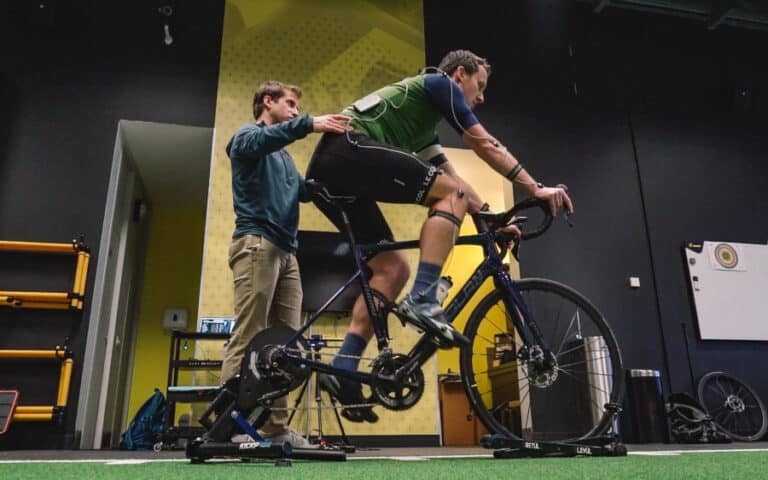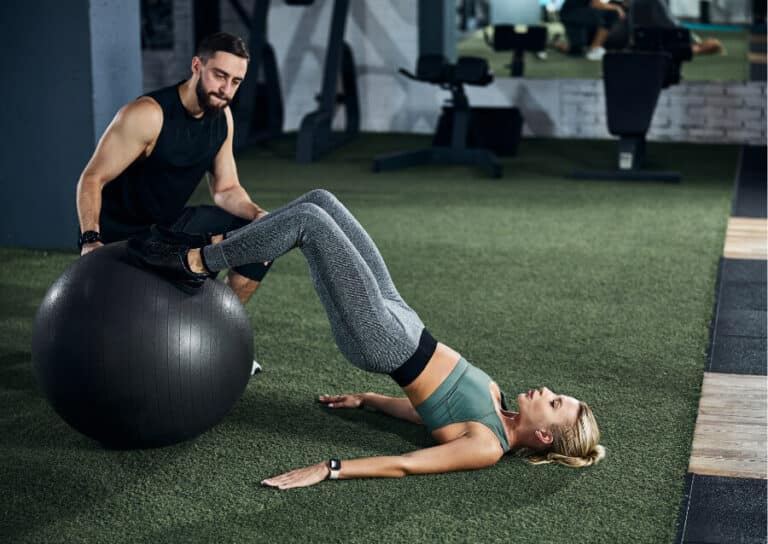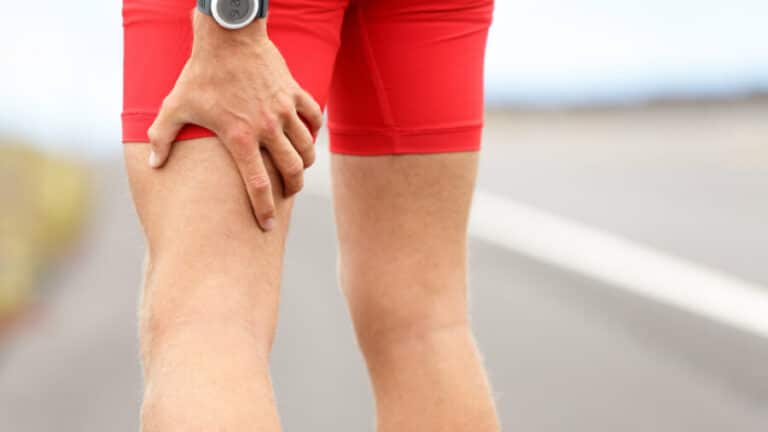It’s safe to say they the rehabs that don’t go well are the ones that haunt you whereas the ones that go well are often forgotten about before the dust has even settled on the athlete’s return to competitive action.
Of course, it is important to reflect on processes that went well, as much as those that didn’t in order that we can constantly refine our approach and use our increasing bank of positive and negative experiences to improve and enhance the next one.
Individual and collective reflection on any injury and rehab is an ABSOLUTE MUST if any High-Performance team really wants to consider itself high performance.
Here are (our) 8 key takeaways
- “The days of rehabilitation being a one practitioner show are well and truly over!” – In the past, it was common for a single practitioner to take an athlete on the rehab journey from day 1 of acute injury management through to return to train/play & performance.
Now, this is absolutely a team approach with key stakeholders coming to the fore and leading from within at relevant moments. With this team approach of course it is absolutely vital that teamwork and communication are at their maximum possible level. At any moment in time, this doesn’t mean multiple practitioners working in silos. This means a club/organisation agreed rehabilitation pathway is developed with key stakeholders contributing at the most pertinent moments along the way to maximise the skill sets and experience of all team members. Diagnosis – prognosis – rehab plan – daily plan – treatment – gym – athletic development – fitness – position specifics – training integration – RTPerformance – etc
- “Be prepared to flex” – we all gain comfort from putting together balanced and reasoned rehabilitation pathways at the moment of diagnosis and prognosis. Job done let’s just follow this plan right? Well not quite, at best the initial rehab plan should be considered a “mud map” which will evolve. So whilst nothing feels more comforting than having a framework to work from with key clinical and objective markers mapped out to underpin the decision-making process along the way – The truth is this is likely to need to adapt to the individual’s response to the injury, their history, outside influencers (personal physios*, conditioners, radiologists, psychs, agents, national team medical staff), club demands, team demands etc.
I often see people present their version of muscle injury rehabs at conferences and think we are all guilty of presenting “the perfect rehab” whereas in truth we are often negotiating a minefield of differing opinions from multiple stakeholders whilst striving to keep athletes on the pathway to recovery and wellness in the quickest and safest way (where are the 5 days the player disappeared to Dubai with his physio who has never spoken to us and given us no idea of his content??). This often means we need to adapt to things beyond our control and accept that the perfect rehab doesn’t exist!
*This can be integrative and done well – look out for the blog on how R4P supports from the outside in. - “Make sure somebody is in the helicopter” – those who are closest to the rehab process are not always best placed to see the bigger picture. Whilst it is absolutely vital to have a lead Physiotherapist at the centre of a rehab it is also true to say that another practitioner taking one step back also helps to keep the overview which is only visible from the helicopter.
In my opinion, Physiotherapists are best placed at the front line to control the tempo of rehabilitation by being proactive and reactive to any changes in the athlete’s presentation depending on the stimulus they have been exposed to. As physios, we benefit from knowing the athlete’s “normal” pre-injury state due to the nature of our roles with fit players and we understand the athletes’ bodies intrinsically. The one-on-one nature of the interactions with the athletes during treatment builds strong trusting relationships which then gives power to our voices of encouragement when needed within rehabilitation. Alongside this, the helicopter pilot supports the frontline practitioner through conversation, process development, questioning and reflection. - “Question your teammates” – I once read that NASA always has at least one new team member in any meeting who hasn’t been part of the particular process to date. Somebody sitting in on an update on a particular journey for the first time is much more likely to question the process as they aren’t already “in on” the journey. Group dynamics determine that once we reach an agreement on something we are all likely to process with that and unlikely to revisit it. Issues arise when that initial agreement in itself either isn’t accurate or absolutely wrong (eg the diagnosis). The further along the journey (in this case of rehab) we go the harder it gets for us as a group to admit that we might actually have been on the totally wrong path from the start! Having a fresh pair of eyes/ears who is placed in order to question and check the process to date (without it being perceived as a threat) is a great way to draw on the experience of the team and act as a safety net for collective group dynamics.
NASA do this due to the risk associated with what they do; they need as many safety nets as possible to protect them against the very real risk of human error due to the catastrophic outcome if they get things wrong. In sport, we should be equally as comfortable in being “checked” and as happy to accept that safeguarding against human error is a part of medical care which should be considered normal in a thorough process of excellence. - “A scientific art” – Radiological findings, clinical measures, objective data, strength diagnostics, performance profiling, physiological responses and sport-specific metrics form part of the framework which underpins sound decision-making and rehabilitation pathways, gateways and return to plays! (It even rhymes). I am a huge advocate for the importance of this (non-exhaustive) list in supporting the clinical decision-making process which shapes any rehabilitation. What is vital however is that we don’t forget to join the science with the art. Done well rehabilitation combines the objective and scientific side of data collection with the softer findings any athlete will present with in response to the task they are exposed to.
This again comes down to human connection, recognising the bigger picture, and taking time to understand the individual and their needs and goals. Ultimately if any rehab was only about collecting data along a timeline determined by hitting metrics then anybody could do it. Instead, the skill comes in knowing when to expose the athlete to the gateways along the pathway and using task-based criteria whilst not forgetting we are dealing with an individual human being and not a robot. - “Secondary issues might be primary ones – but they probably aren’t” – the more complex rehabs often show up some underlying issues which were possible contributors to the resulting injury and let’s be clear – it is important to consider the athlete as a whole and get on top of any *relevant* secondary findings. However, in sport we are often guilty of confusing correlation with causation. Let’s take “the pelvis” as a good example of this. I’ve lost count of the number of times lower limb injuries have been traced back (causation) to an underlying pelvic or SIJ issue and have been declared the reason why it has occurred. Non-withstanding the difficulty in reliably and accurately measuring any issue around the pelvis (but let’s assume we can) the multi-factorial nature of all injuries means it is very unlikely that a single particular intrinsic physical finding is likely to be the “cause” of any injury though it MAY, of course, be a possible correlation.
Our fascination with the microscopic changes in movement around one particular joint in the body and the fact it is often blamed for any subsequent lower limb injury just doesn’t make sense. I often extrapolate this to other animals and imagine what we would think. Just imagine next time you are watching animal planet, David Attenborough narrating as usual… “it appears that one of the lions has picked up a hamstring injury in the process of sprinting at the end of a 6-mile tracking of a herd of Wildebeest, one of the other lions has pulled his fur down to his gluts, had a look and advised him it turns out his SIJ was “stuck” before he set off! Why is it only the most advanced species on the planet that lie each other in beds and convince each other all sorts of joints are out of alignment??!! The lions would regress as a species if half of them were back in the treatment room getting their pelvis realigned whilst their teammates were out on the field chasing breakfast! - “Keep compact” – one of my favourite terms, when the team on the pitch want to be solid and prevent gaps for the opposition to attack, is to “keep compact”. Medical and Performance teams can take a lot from this approach. At a previous club we used to refer to “rigour within and one message out” – or in other words, we can have as much professional conflict as we want when discussing individual cases as a team, but the message we give to the player, coaching staff and all those other stakeholders mentioned above needs to be consistent. The second an athlete sense that the club staff are not collectively on the same page, you can run into trouble. The athlete may look for the path of least resistance if they are being asked to do something they don’t want to “actually I was speaking with person X and they say I don’t need to do this” or “person x says we are going too fast considering this injury and I should still be in a brace” – both of which may be perfectly points and both of which shouldn’t be expressed to the athlete if the team have collectively decided to approach the rehab in another way. So, KEEP COMPACT and remember your teammates (and friends) are the ones in the medical and performance team around you, make yourselves difficult to break down!
- “Can we truly promote wellness if we constantly look for illness” – we need to remember that elite sports athletes are amongst the fittest and healthiest people on the planet. Of course, we need to be hyper-vigilant to issues and illness as we know the effect of over-training in particular on immunity and of course the lack of sleep on health and recovery in general. However, a rehabilitation journey is as much about building confidence and psychological readiness to compete at the highest level of sporting activity as it is anything to do with physical recovery.
In our desire to “not miss anything” with our over-reliance on scans, tests, medicalisation and diagnostic labelling we have to be VERY careful not to take away the athlete’s mental robustness and psychological resilience. There is no point in building local tissue resilience (eg healthy scar tissue) and a physically robust athlete (through appropriately periodised rehabilitation and reintegration) if the athlete is afraid to use those attributes.
So that’s where we are right now.
No two rehabs should ever be the same and each subsequent one is a chance to build on and improve on the last one.
That can only happen if we are prepared to admit when we are wrong, when we could be better and also (it’s ok to do this) reflect on what went well!
Good luck out there and STAY COMPACT.



